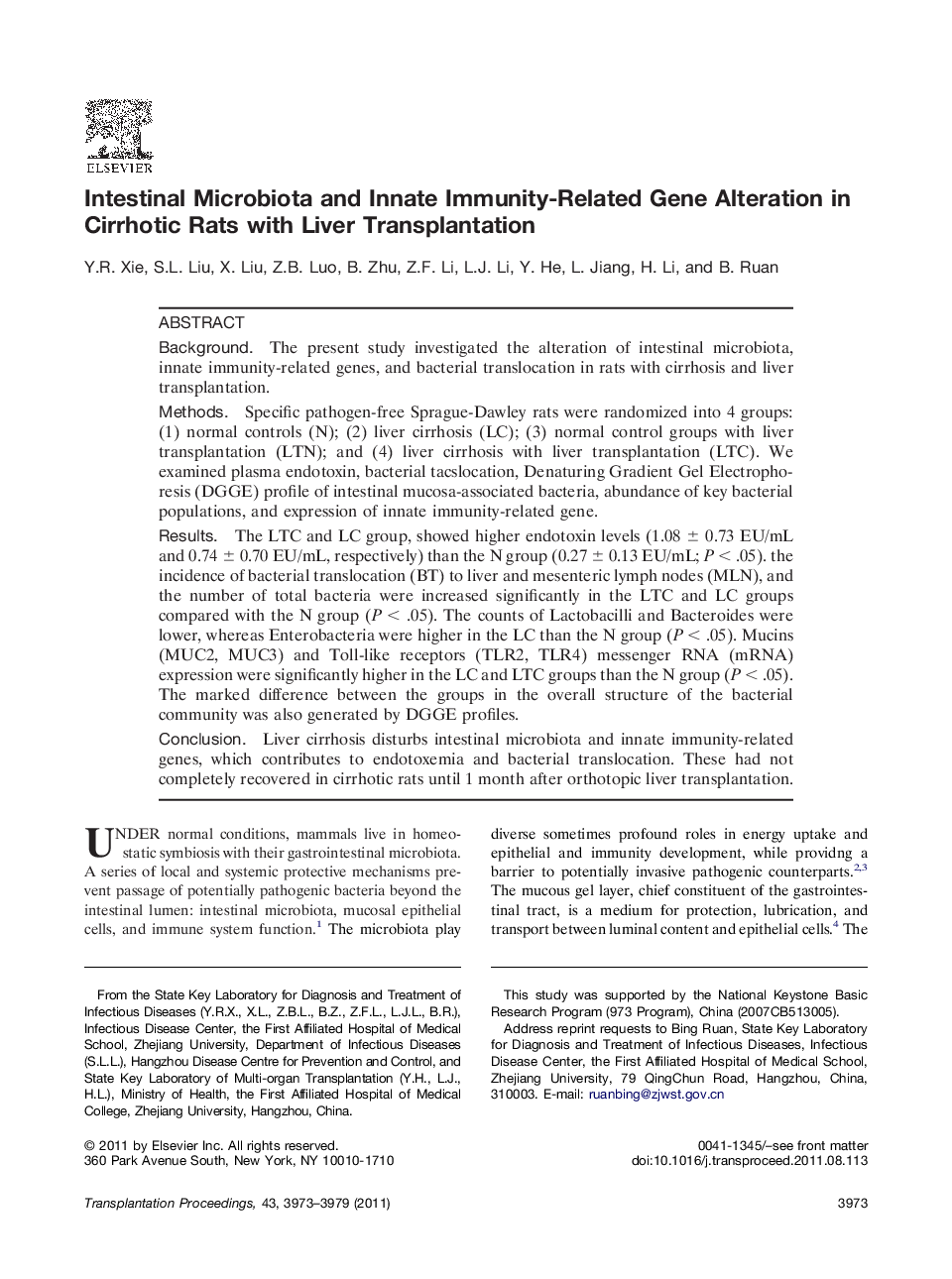| Article ID | Journal | Published Year | Pages | File Type |
|---|---|---|---|---|
| 6249062 | Transplantation Proceedings | 2011 | 7 Pages |
BackgroundThe present study investigated the alteration of intestinal microbiota, innate immunity-related genes, and bacterial translocation in rats with cirrhosis and liver transplantation.MethodsSpecific pathogen-free Sprague-Dawley rats were randomized into 4 groups: (1) normal controls (N); (2) liver cirrhosis (LC); (3) normal control groups with liver transplantation (LTN); and (4) liver cirrhosis with liver transplantation (LTC). We examined plasma endotoxin, bacterial tacslocation, Denaturing Gradient Gel Electrophoresis (DGGE) profile of intestinal mucosa-associated bacteria, abundance of key bacterial populations, and expression of innate immunity-related gene.ResultsThe LTC and LC group, showed higher endotoxin levels (1.08 ± 0.73 EU/mL and 0.74 ± 0.70 EU/mL, respectively) than the N group (0.27 ± 0.13 EU/mL; P < .05). the incidence of bacterial translocation (BT) to liver and mesenteric lymph nodes (MLN), and the number of total bacteria were increased significantly in the LTC and LC groups compared with the N group (P < .05). The counts of Lactobacilli and Bacteroides were lower, whereas Enterobacteria were higher in the LC than the N group (P < .05). Mucins (MUC2, MUC3) and Toll-like receptors (TLR2, TLR4) messenger RNA (mRNA) expression were significantly higher in the LC and LTC groups than the N group (P < .05). The marked difference between the groups in the overall structure of the bacterial community was also generated by DGGE profiles.ConclusionLiver cirrhosis disturbs intestinal microbiota and innate immunity-related genes, which contributes to endotoxemia and bacterial translocation. These had not completely recovered in cirrhotic rats until 1 month after orthotopic liver transplantation.
